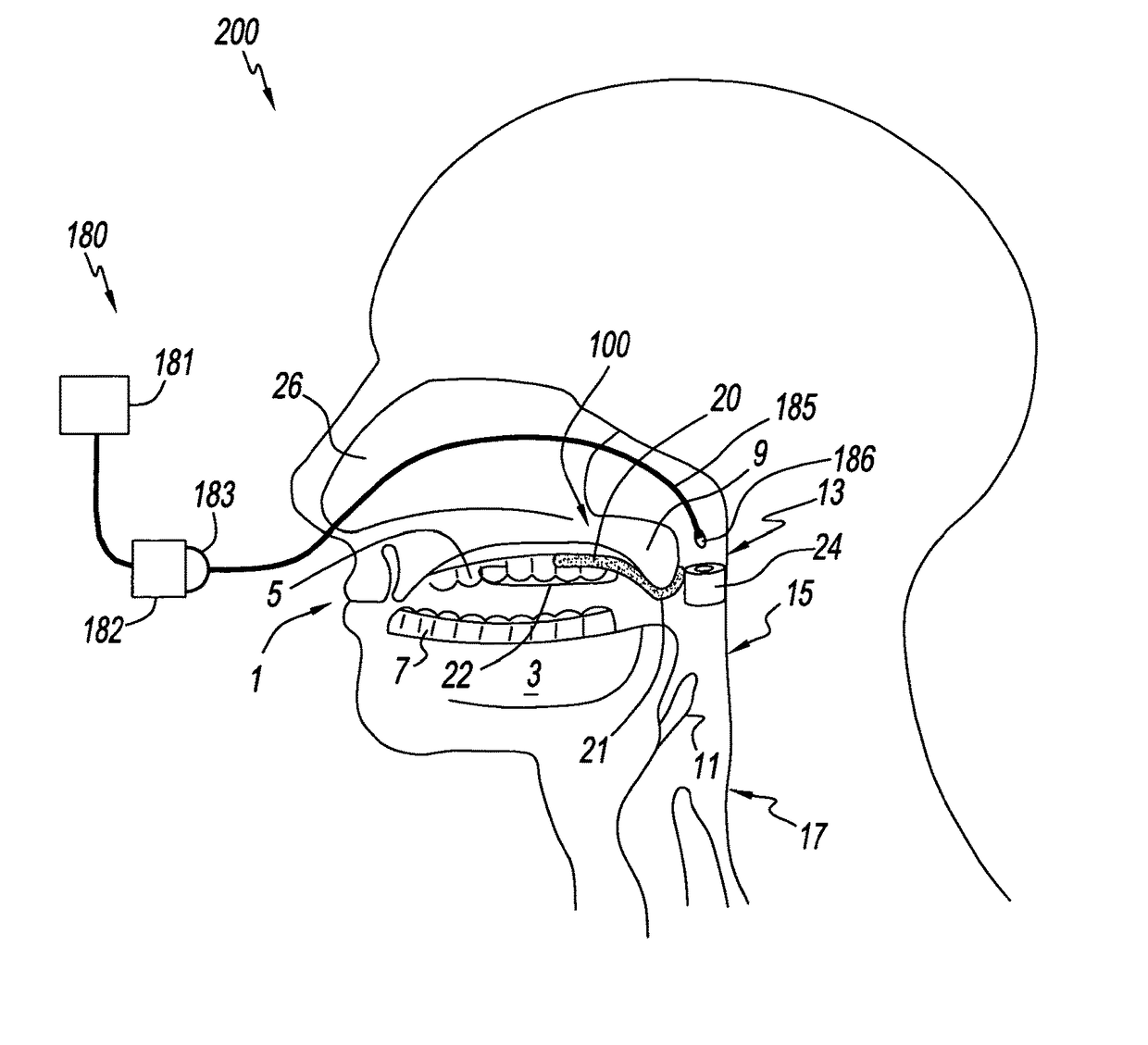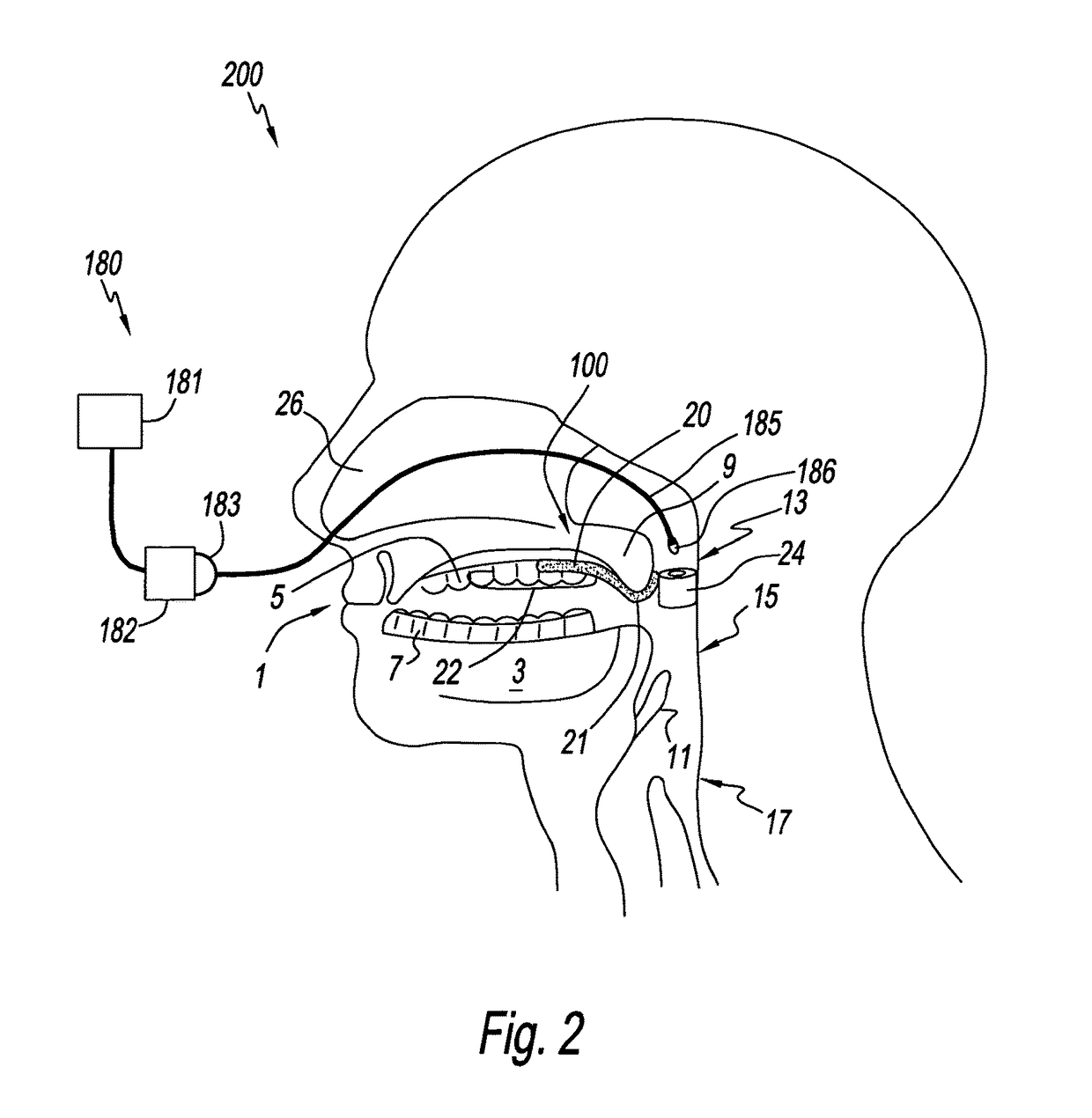Palate retainer with attached nasopharyngeal airway extender for use in the treatment of obstructive sleep apnea
a technology of obstructive sleep apnea and extender, which is applied in the field of interoral appliances, can solve the problems of hypersomnolent sleep apnea patients at risk of excessive mortality, reduced arterial oxygen tension, and potentially severe degrees of oxyhemoglobin unsaturation, and achieve the effect of minimizing the triggering of the gag reflex
- Summary
- Abstract
- Description
- Claims
- Application Information
AI Technical Summary
Benefits of technology
Problems solved by technology
Method used
Image
Examples
Embodiment Construction
[0073]The present disclosure can best be described by referring to the figures, wherein FIG. 1 shows a cross-section of a patient's oral cavity 1. Oral cavity 1 includes a tongue 3, upper jaw 5, lower jaw 7, soft palate 9, and epiglottis 11, as well as the nasopharynx region 13, oropharynx region 15 and laryngopharynx region 17.
[0074]FIG. 2 depicts system 200 which comprises visualization apparatus 180 and appliance 100. Appliance 100 includes palate retainer 20 and a tube shaped nasopharyngeal extension 24. Palate retainer 20 has been positioned about the upper jaw 5 and secured thereto via a wire or other removable securing device 22, such as a wire connected to the teeth. Affixed to retainer 20 by a neck or collar portion 21 is tube shaped nasopharyngeal extension 24 which can be a solid tube with an air passageway disposed thereto to allow air to flow from the nasal passageway 26 through nasopharynx region 13 and into the oropharynx region 15 and laryngopharynx region 17. Collar...
PUM
| Property | Measurement | Unit |
|---|---|---|
| flexible | aaaaa | aaaaa |
| radius of curvature | aaaaa | aaaaa |
| temperature | aaaaa | aaaaa |
Abstract
Description
Claims
Application Information
 Login to View More
Login to View More - R&D
- Intellectual Property
- Life Sciences
- Materials
- Tech Scout
- Unparalleled Data Quality
- Higher Quality Content
- 60% Fewer Hallucinations
Browse by: Latest US Patents, China's latest patents, Technical Efficacy Thesaurus, Application Domain, Technology Topic, Popular Technical Reports.
© 2025 PatSnap. All rights reserved.Legal|Privacy policy|Modern Slavery Act Transparency Statement|Sitemap|About US| Contact US: help@patsnap.com



